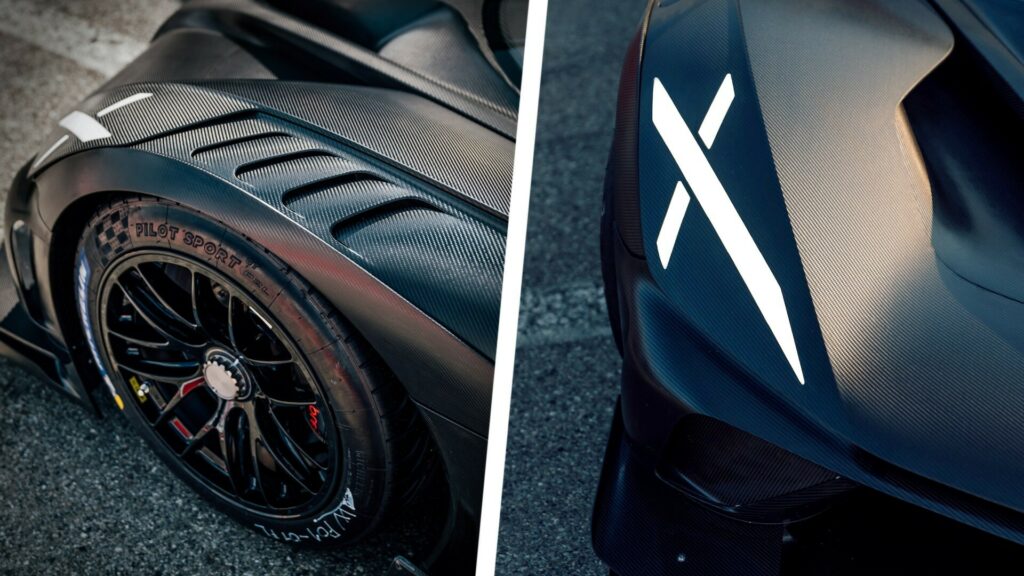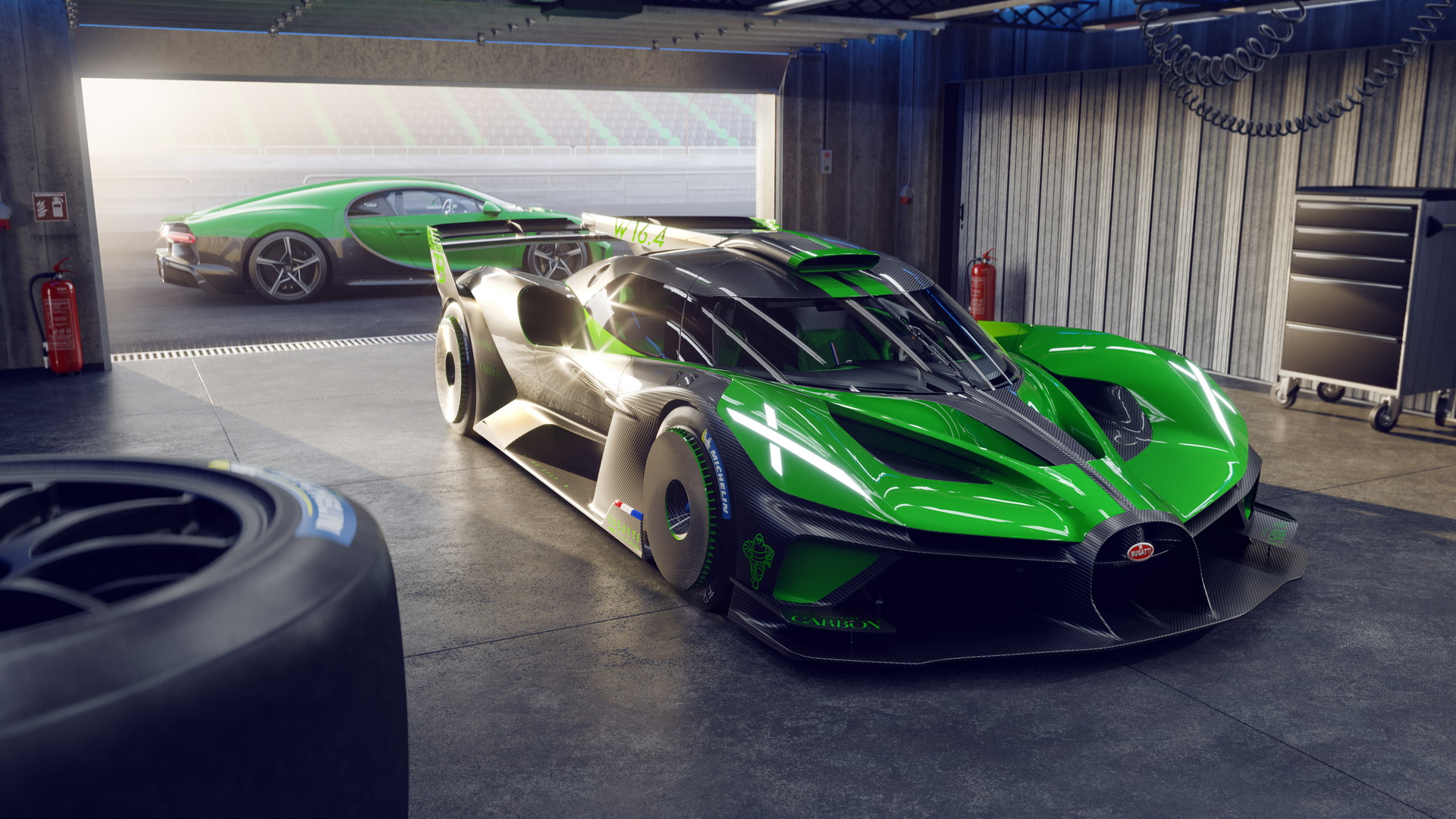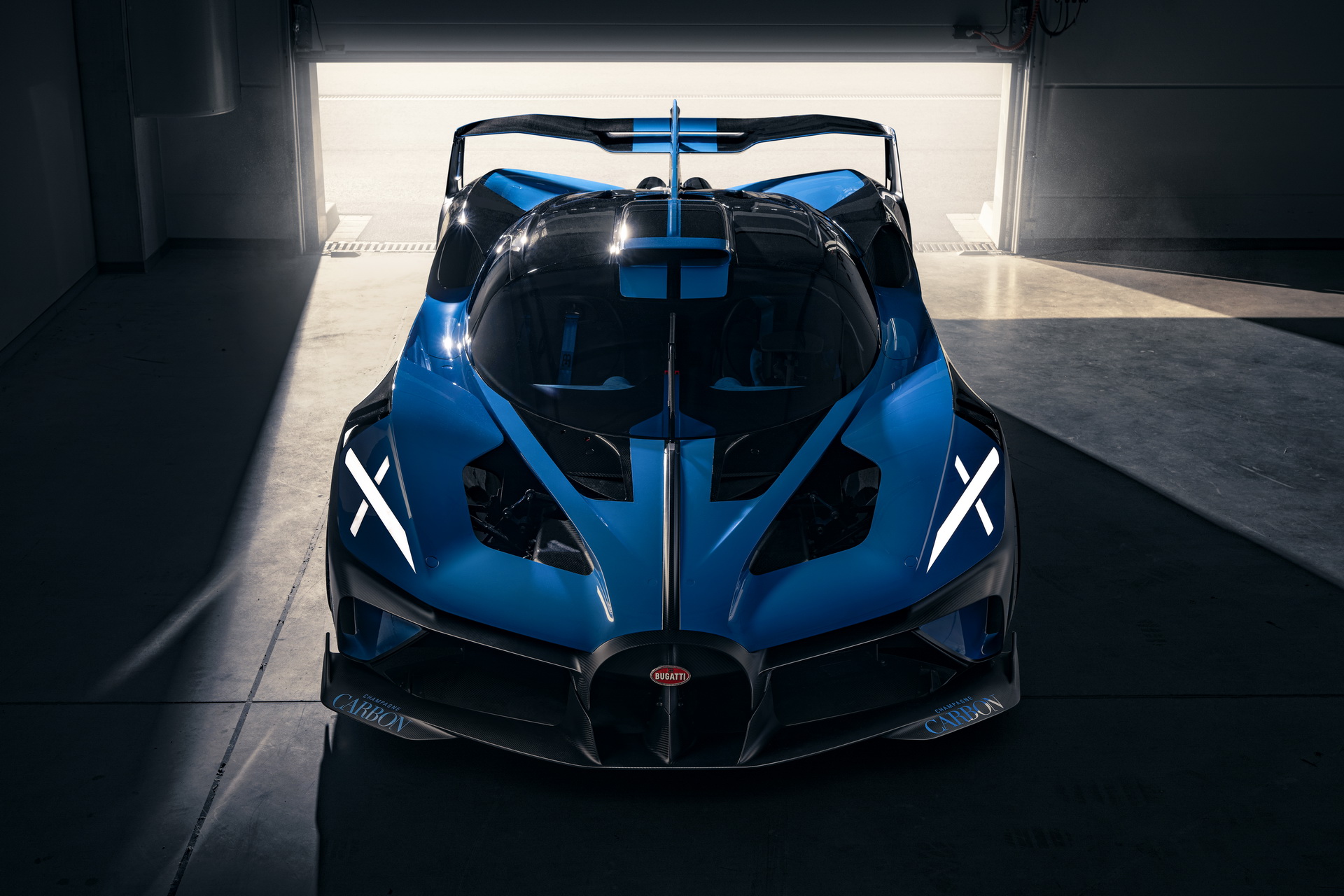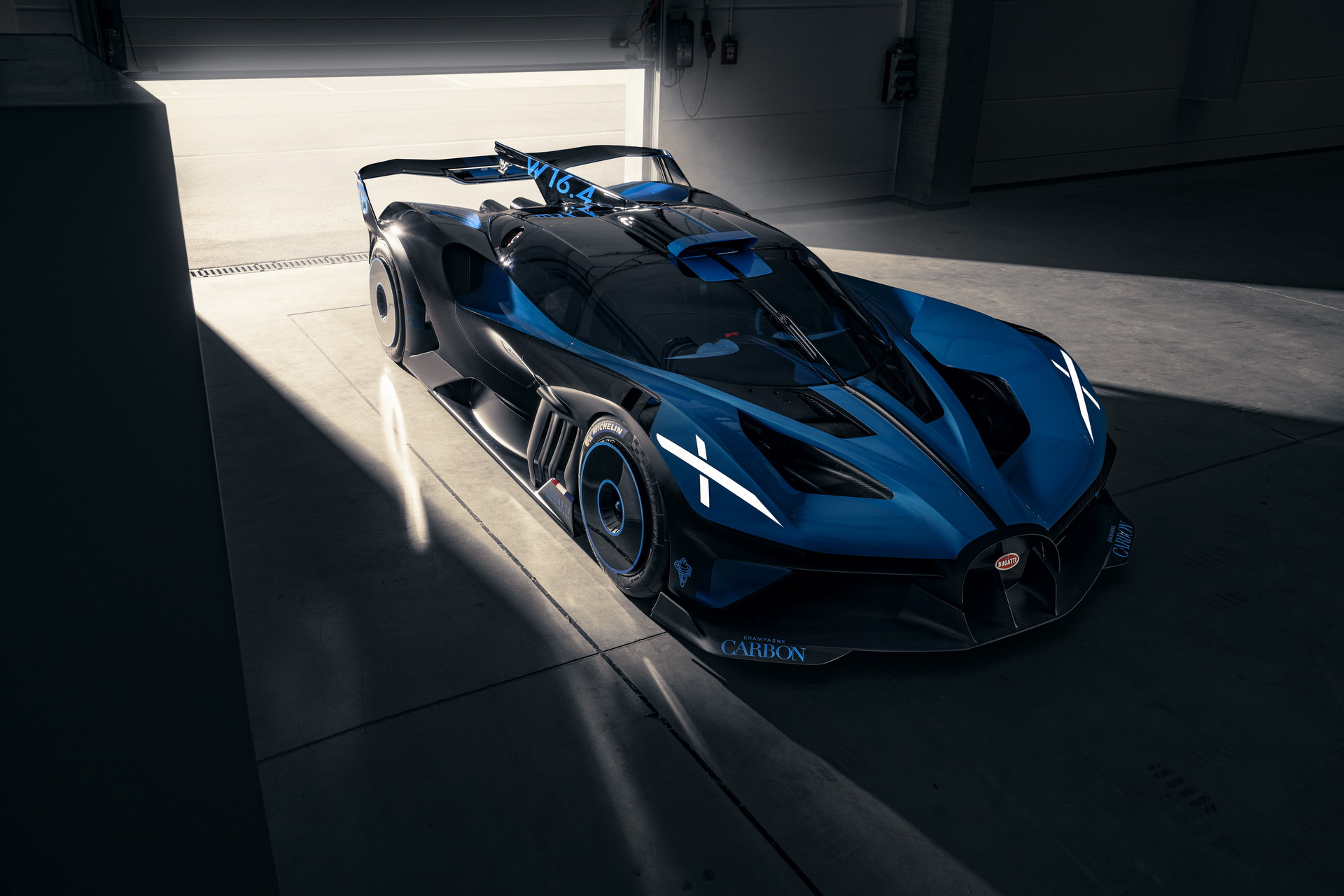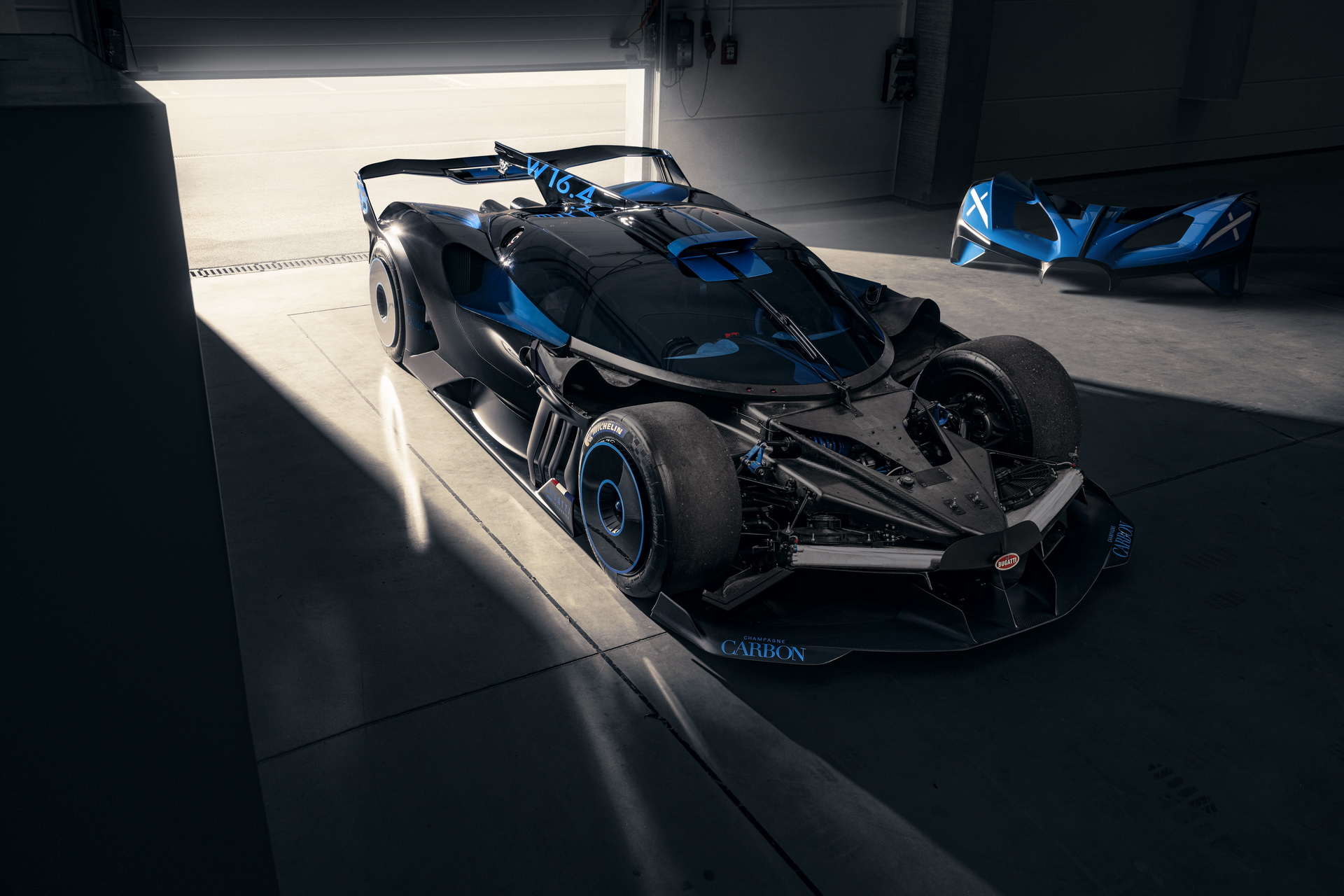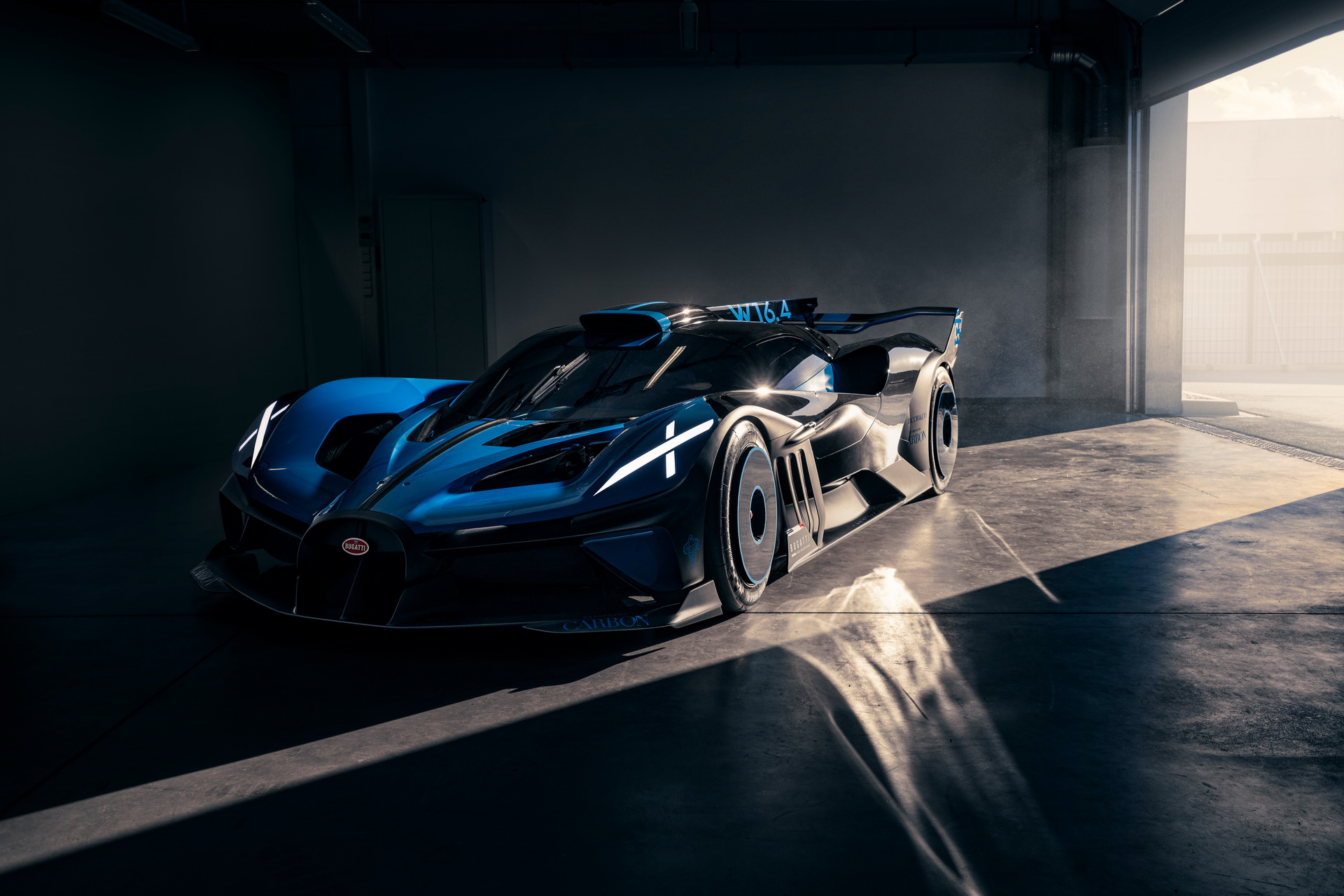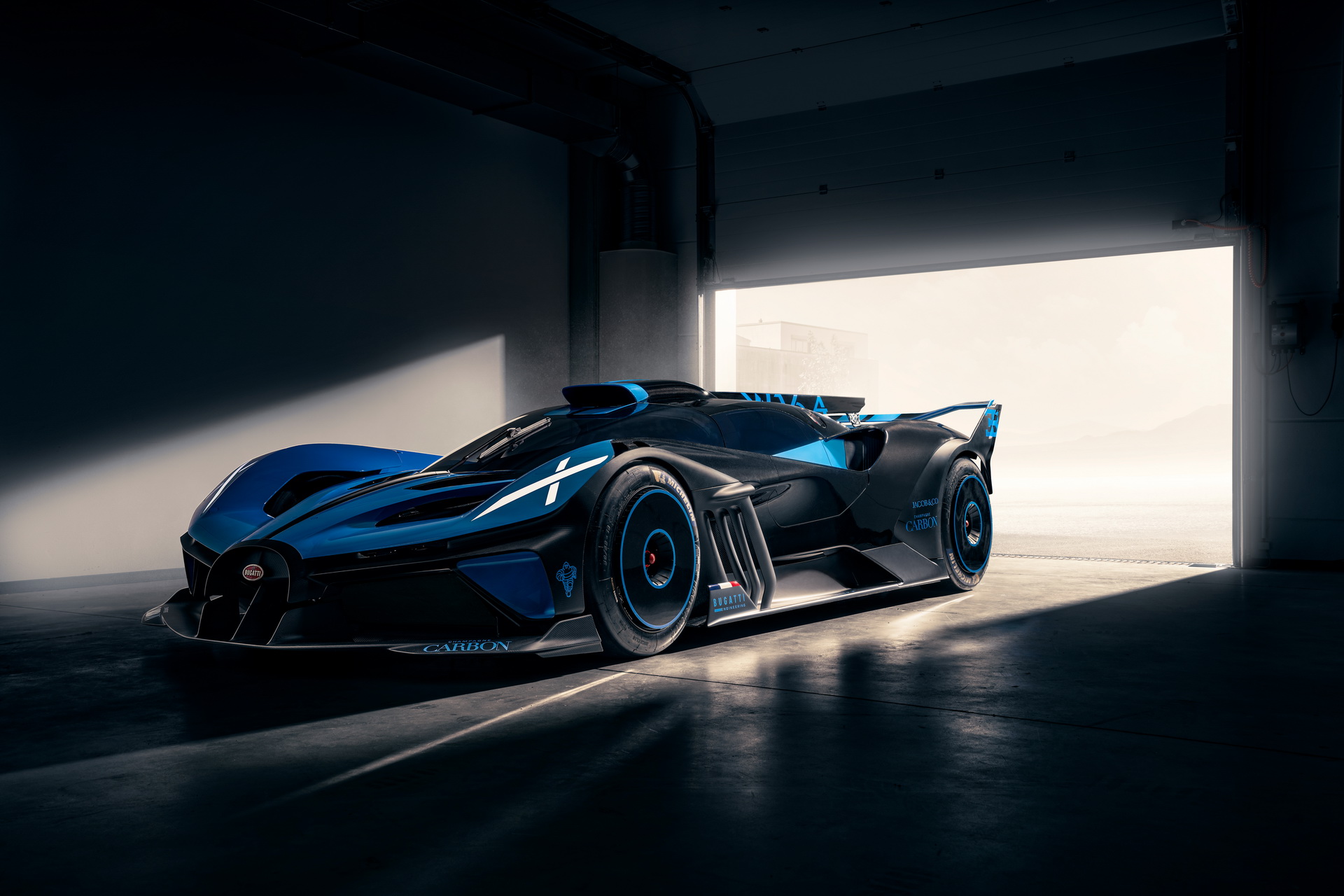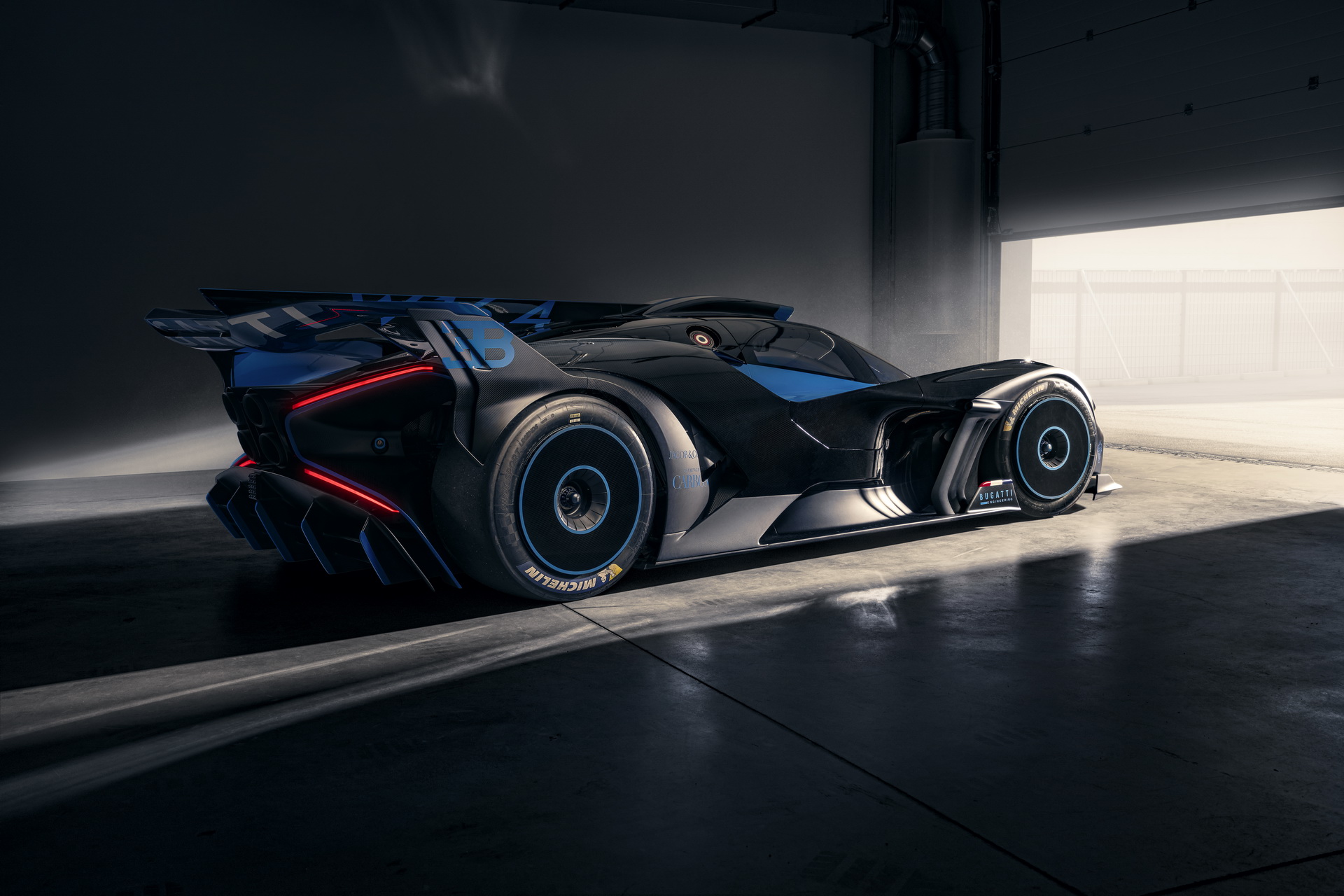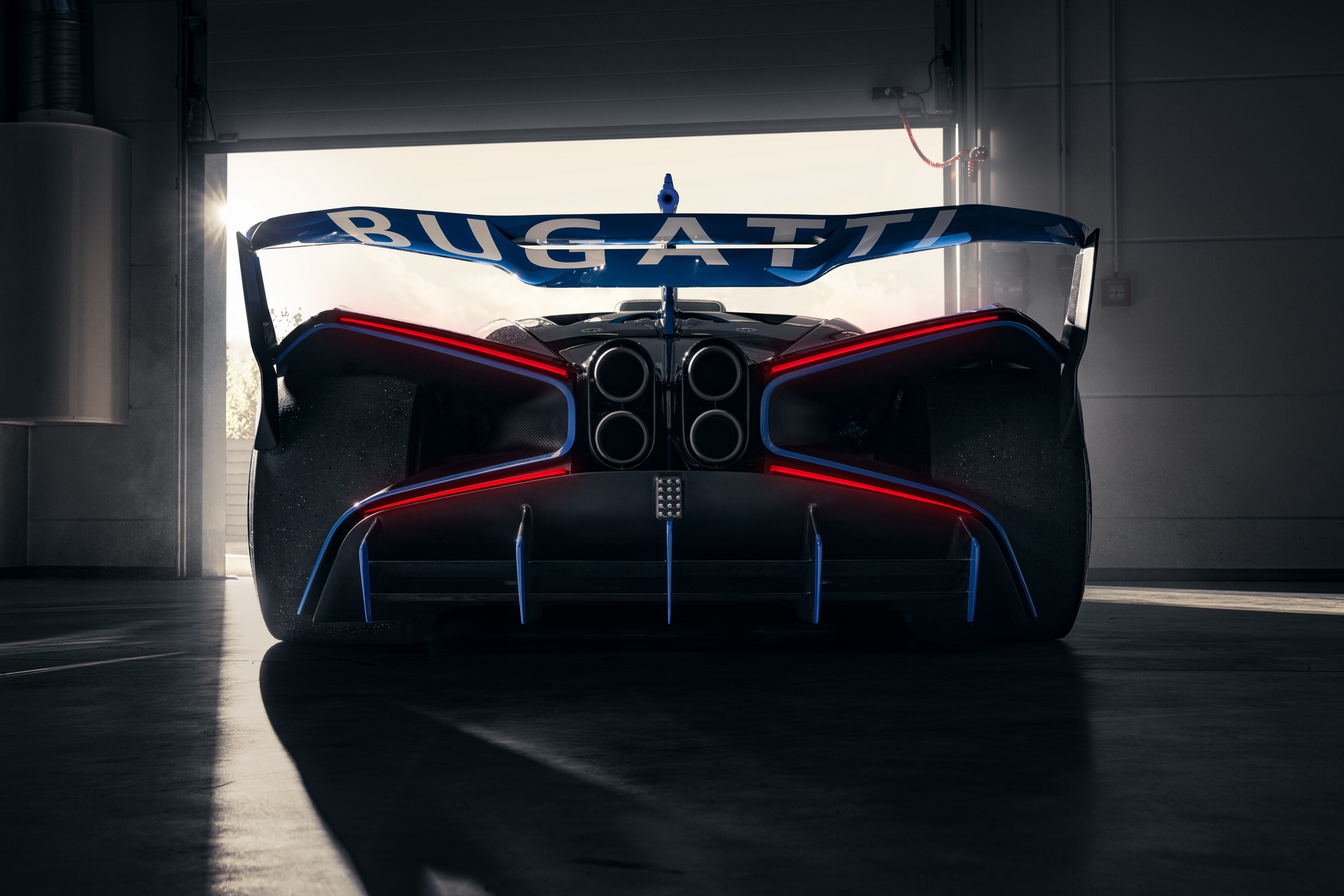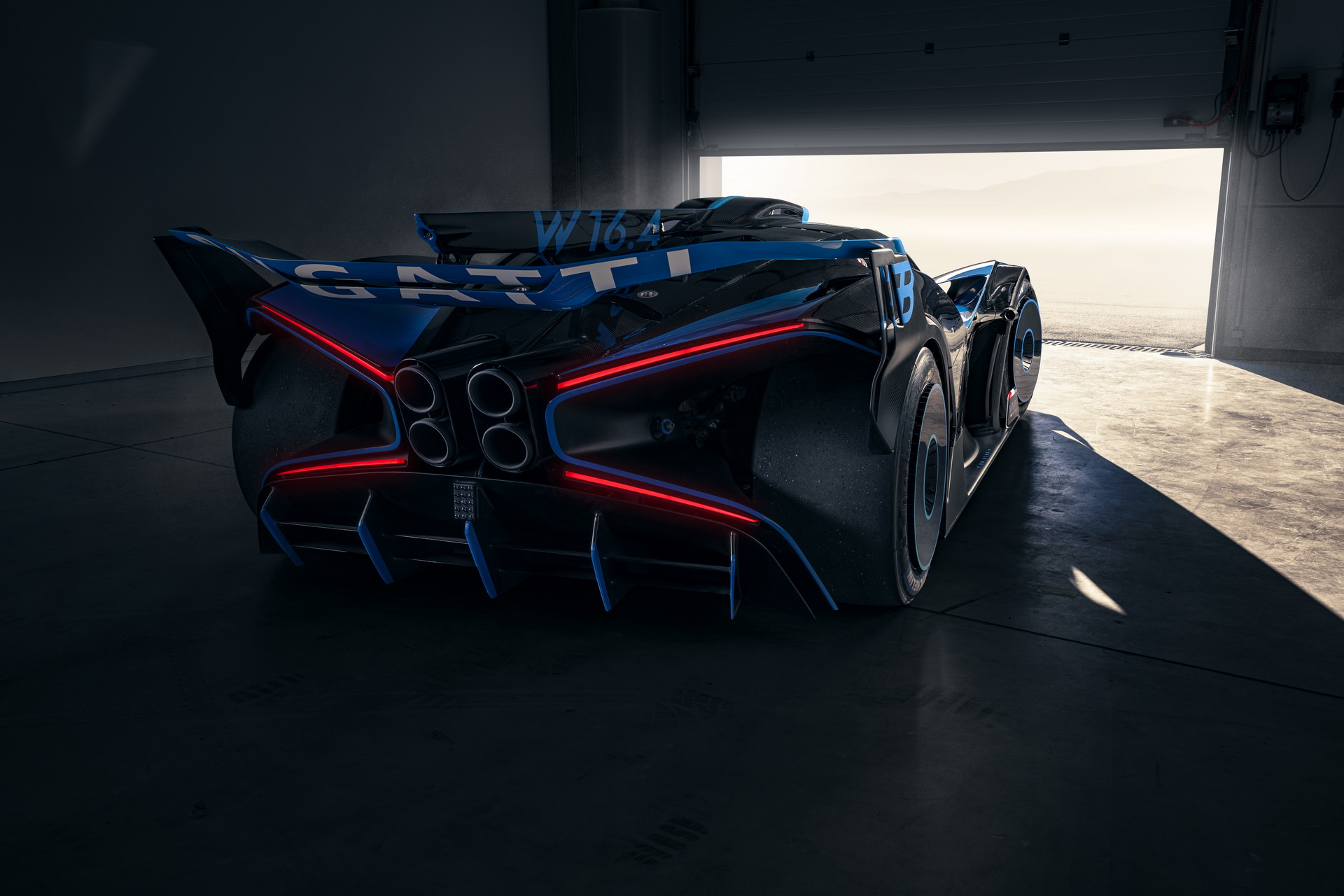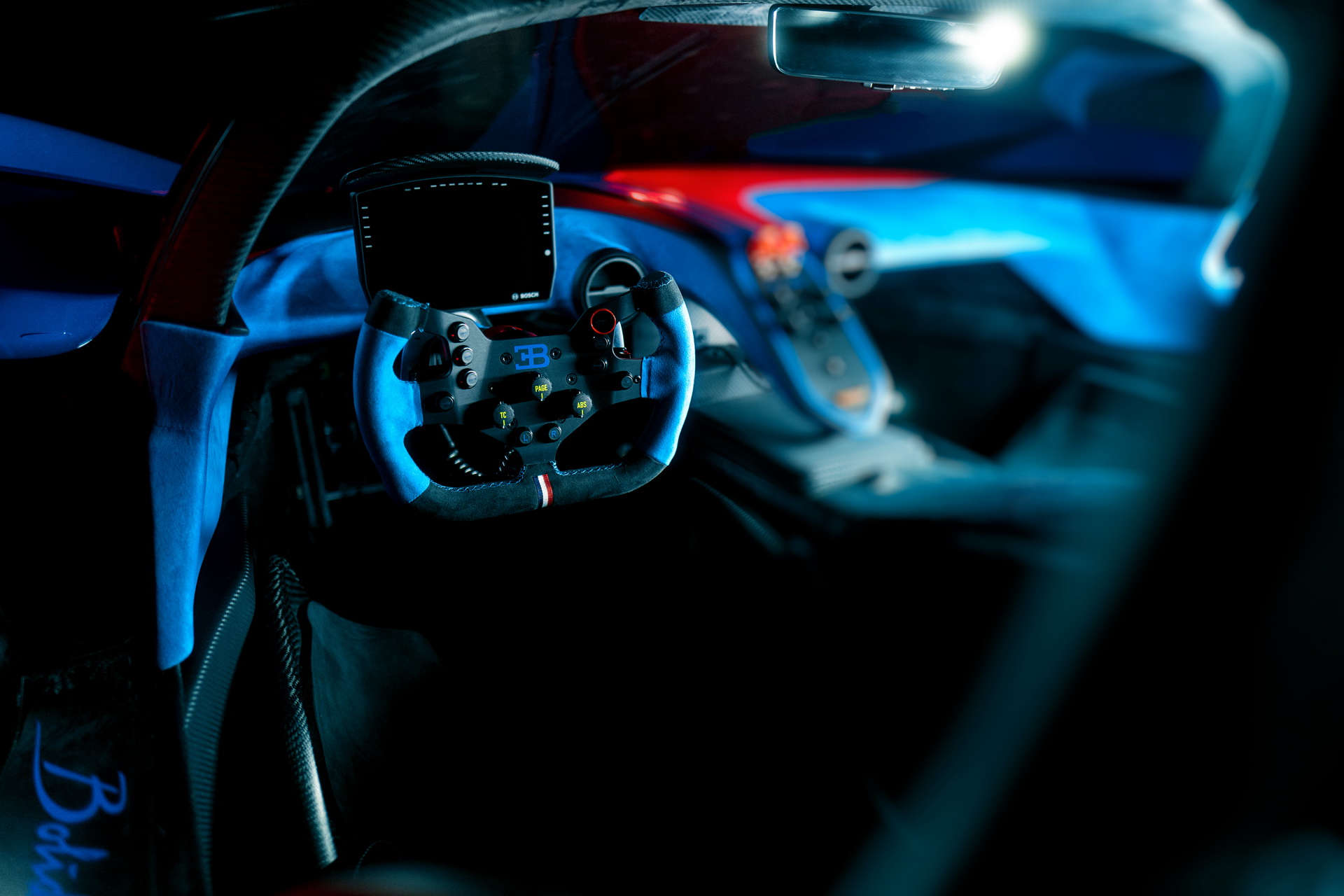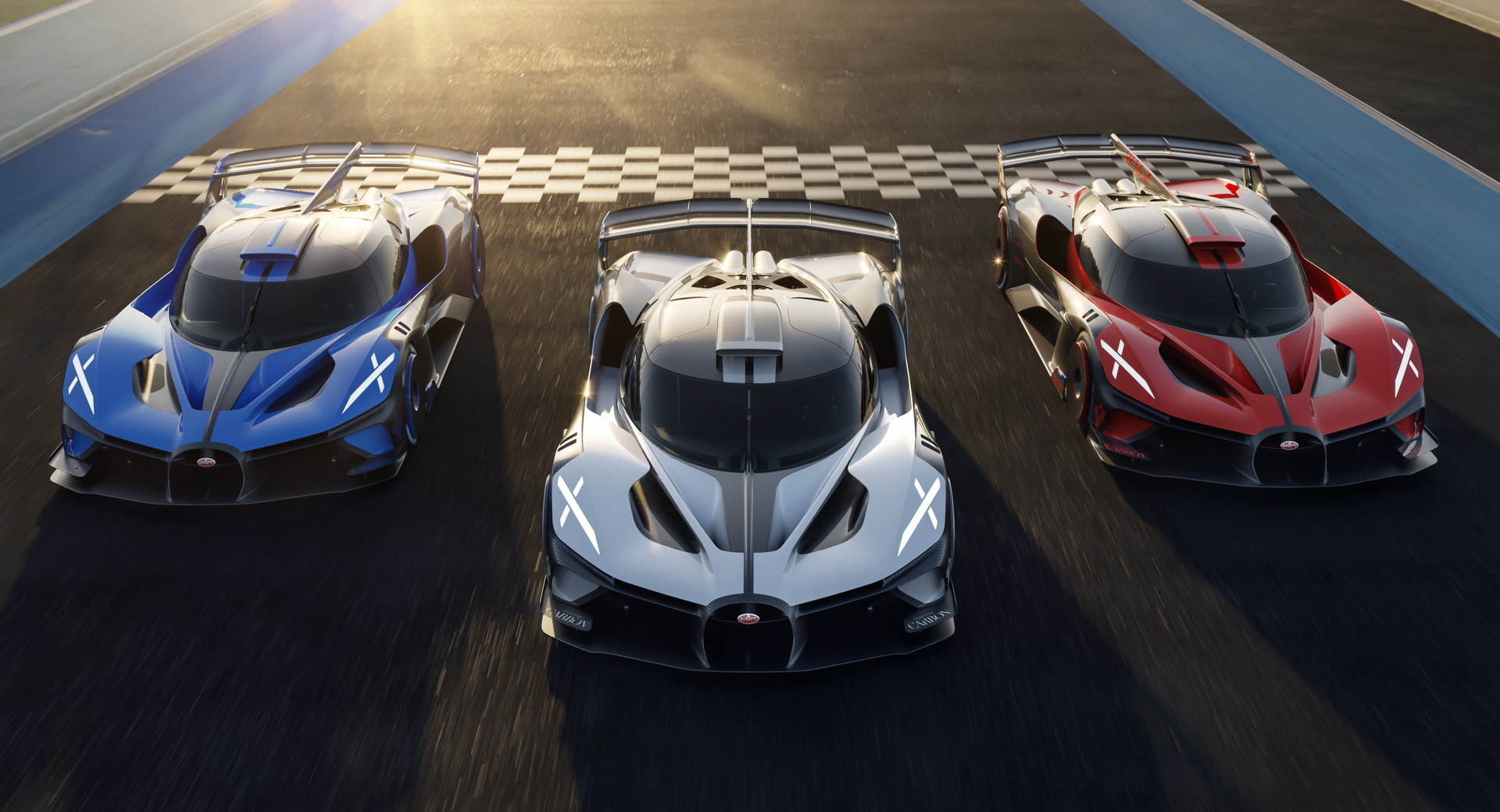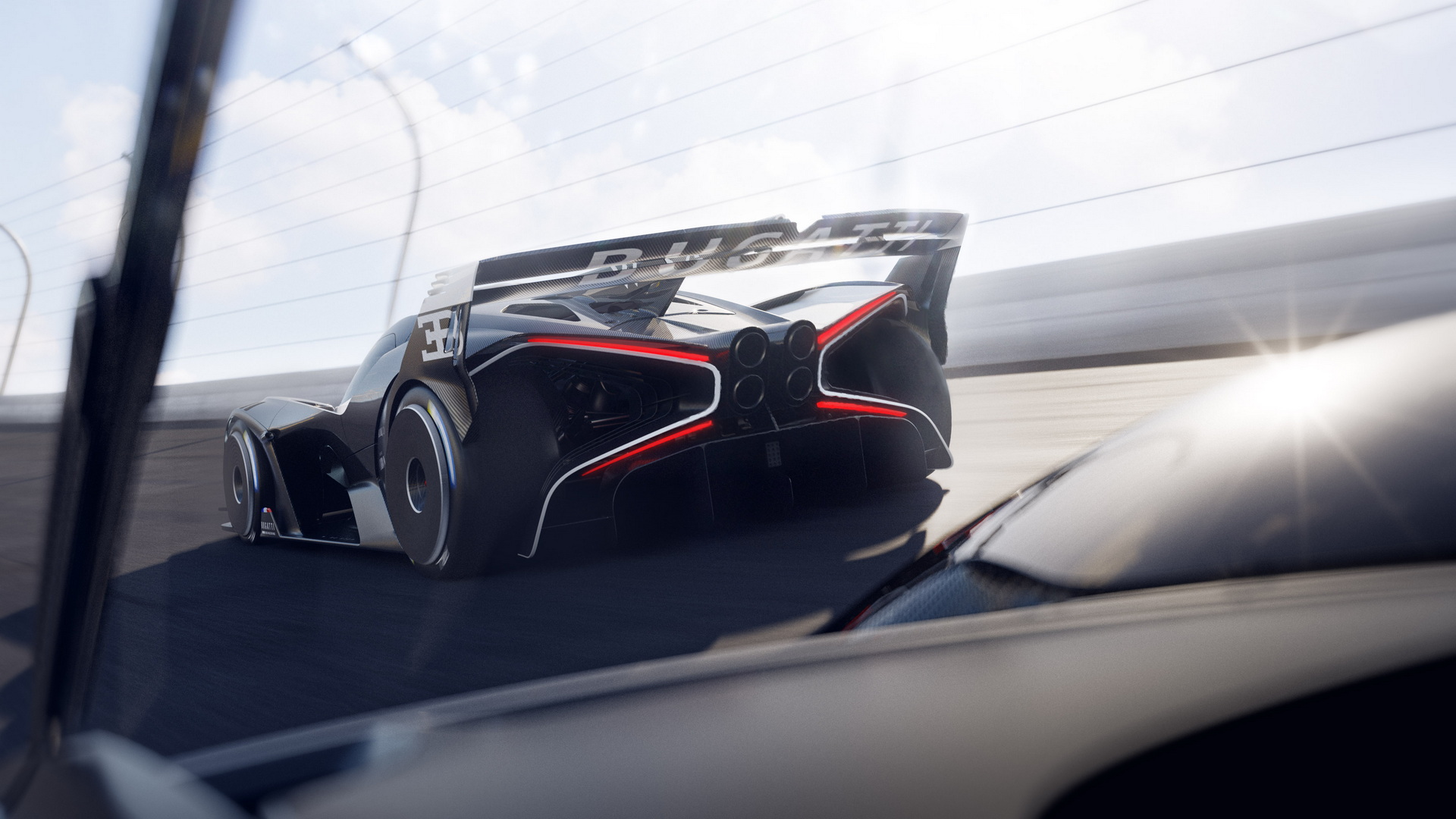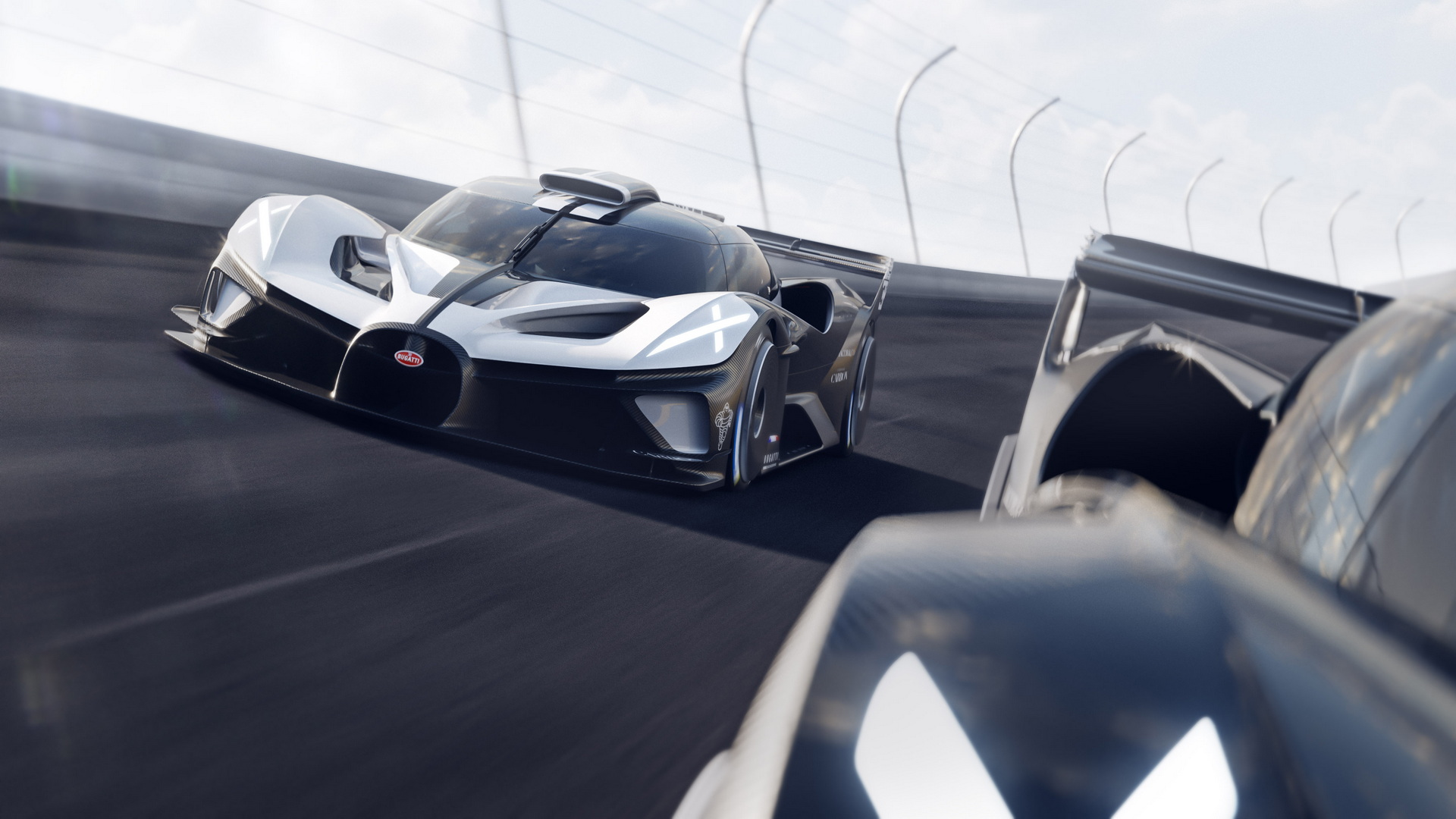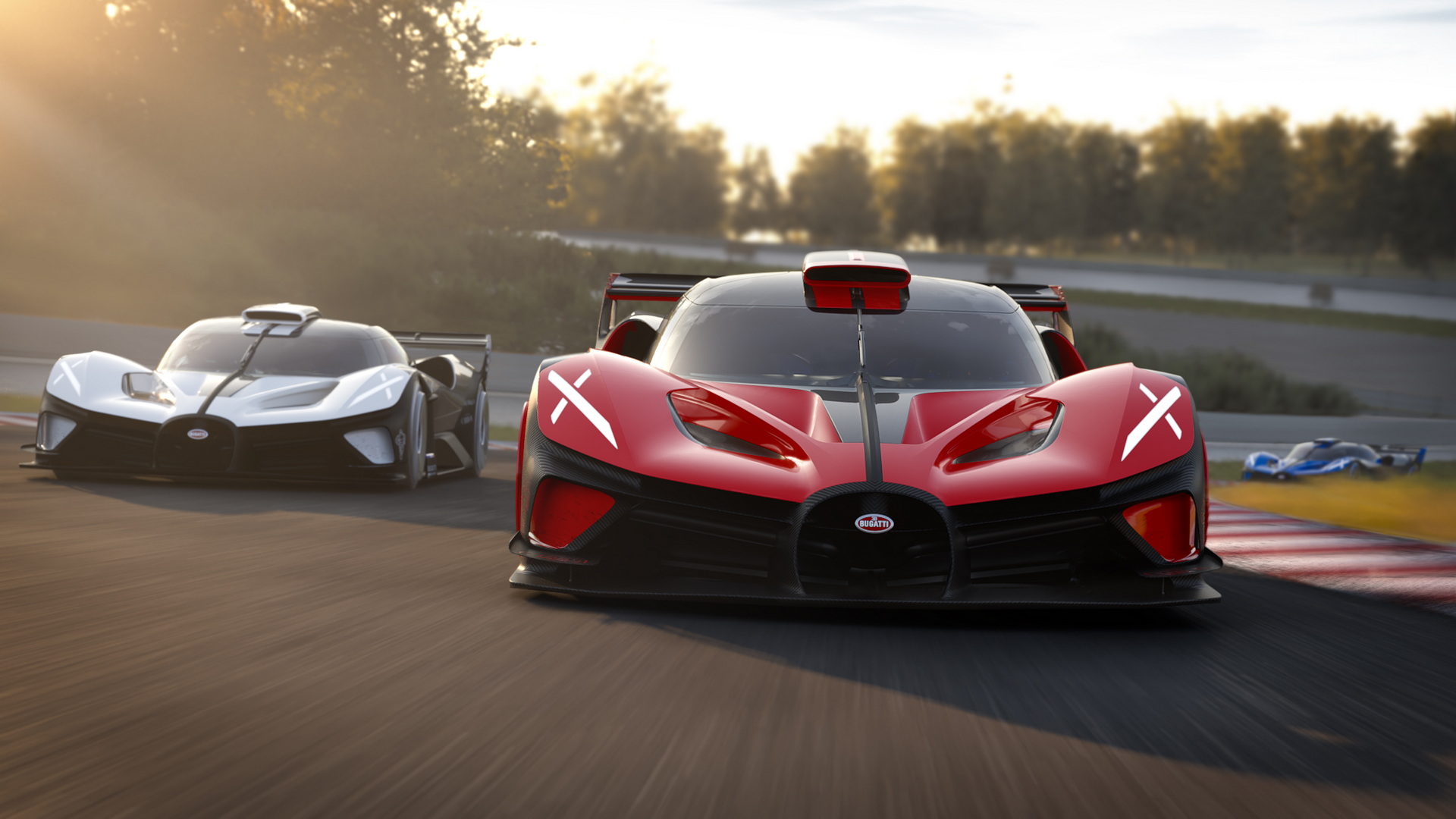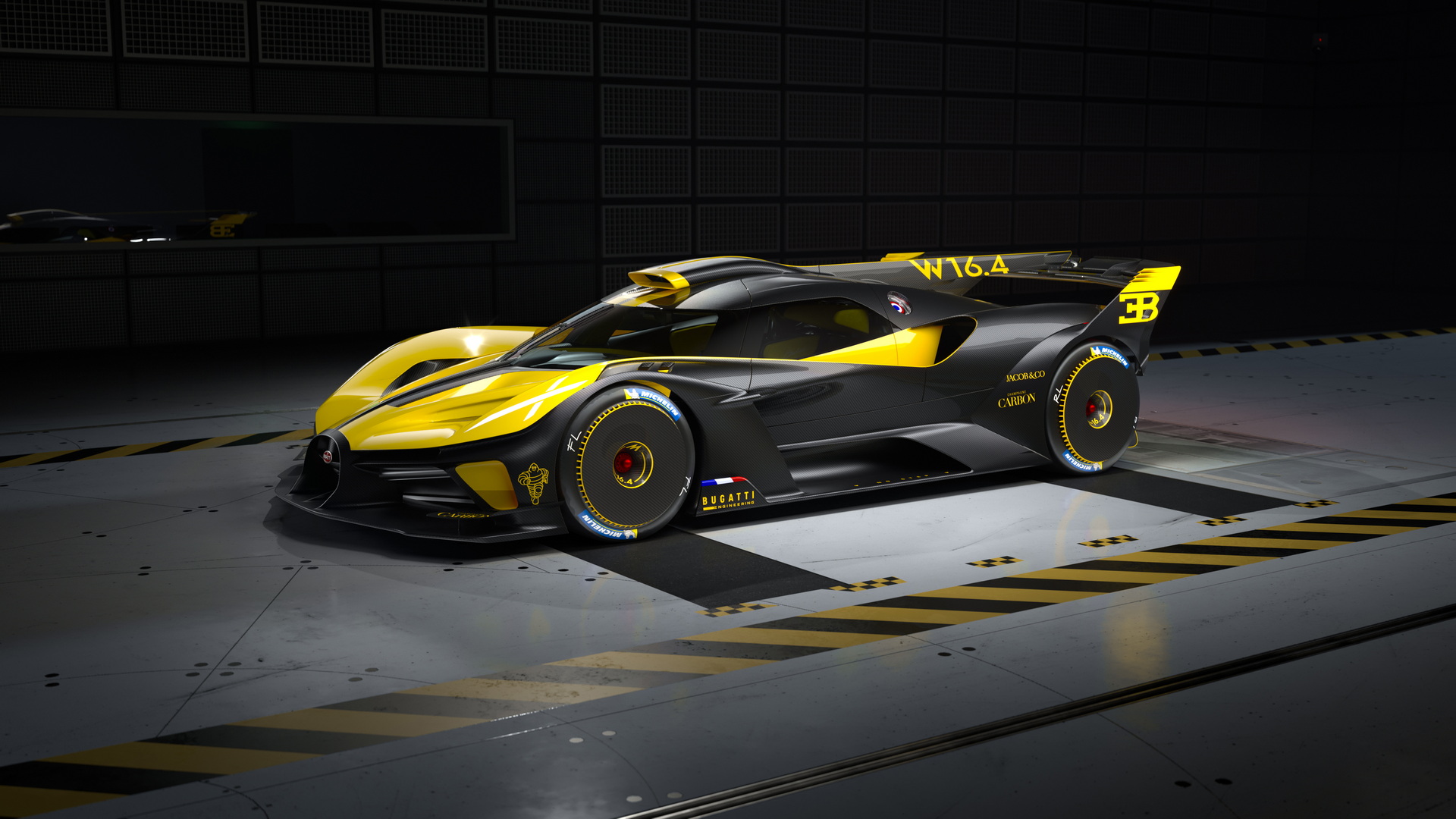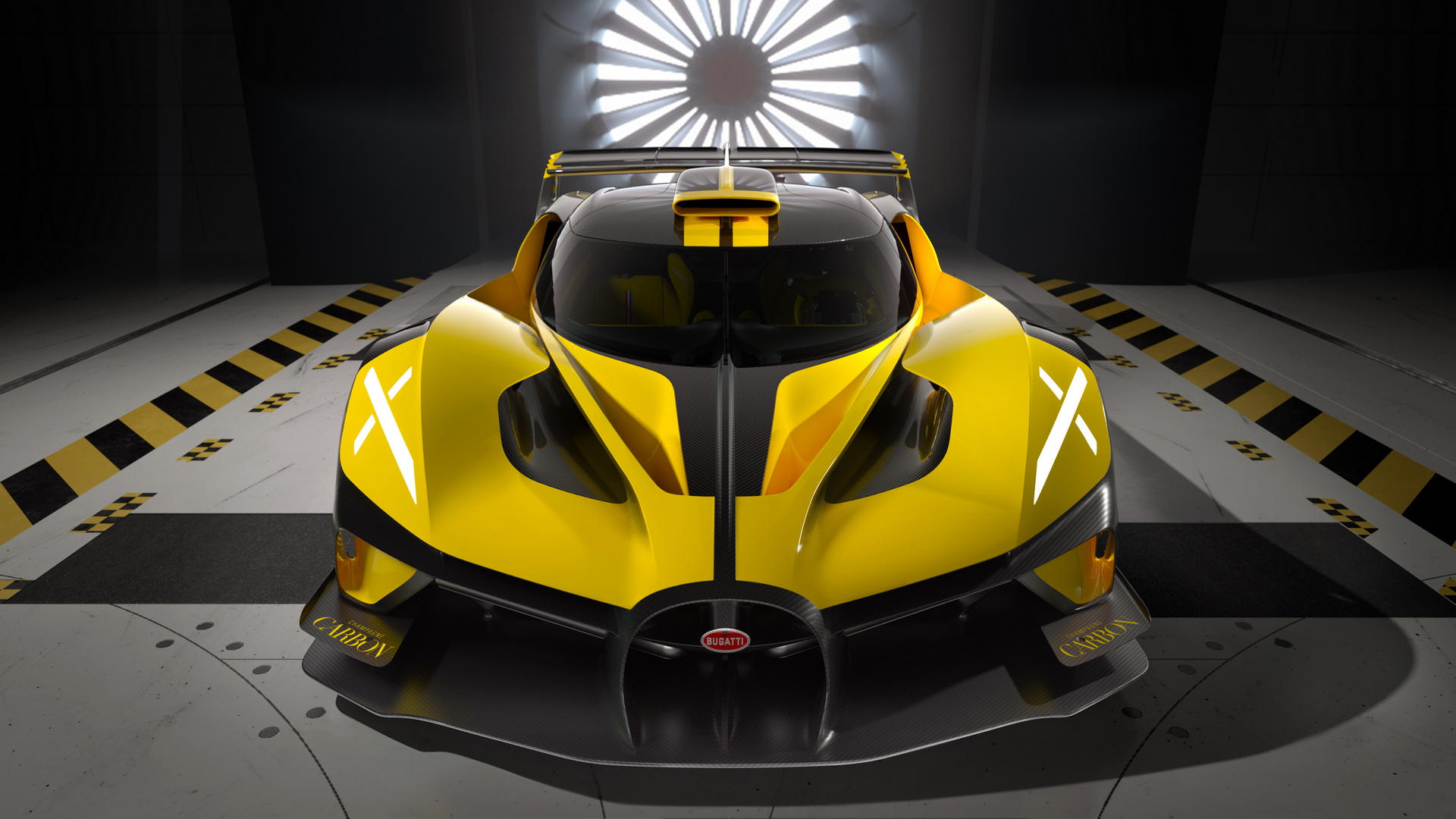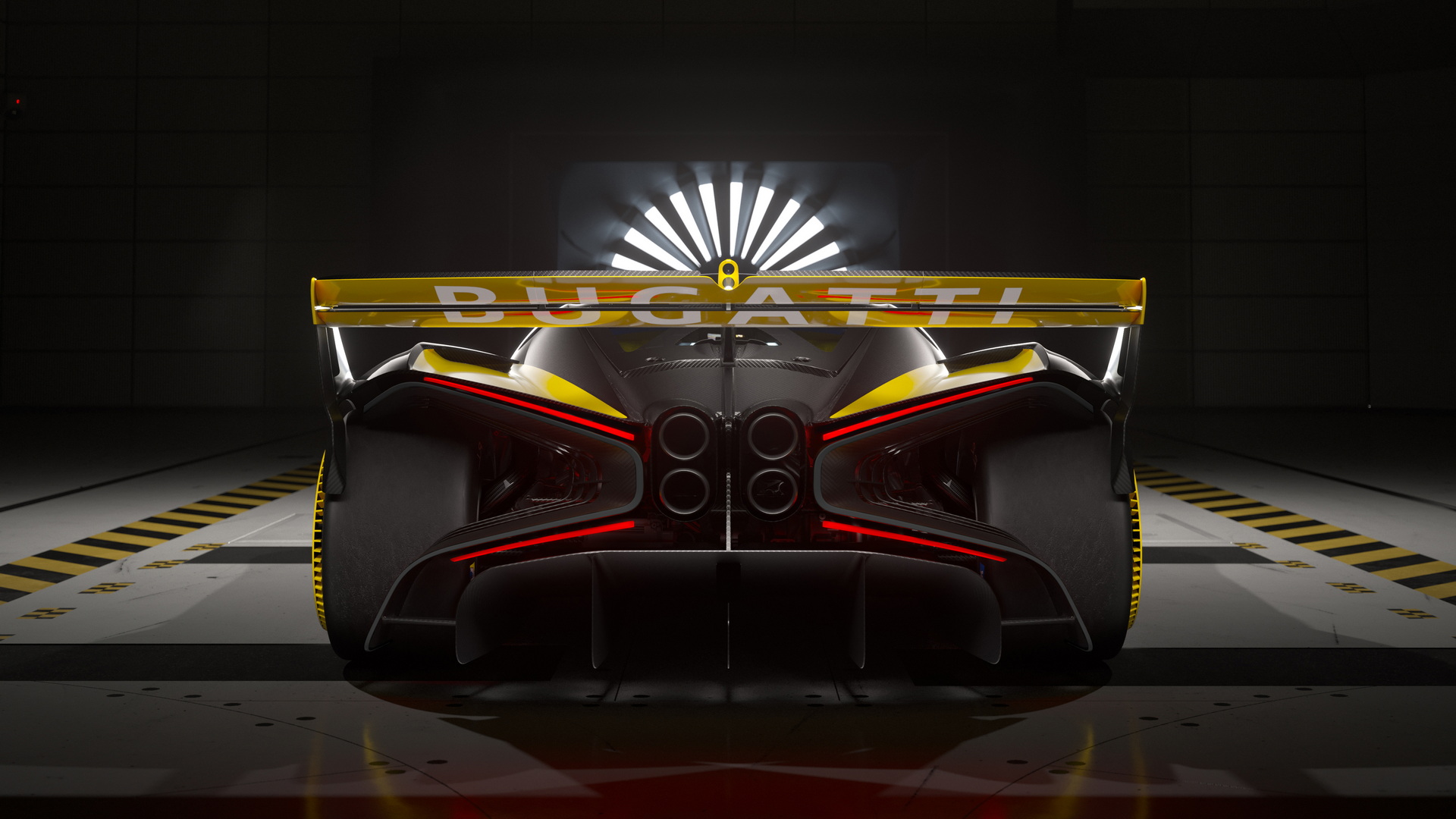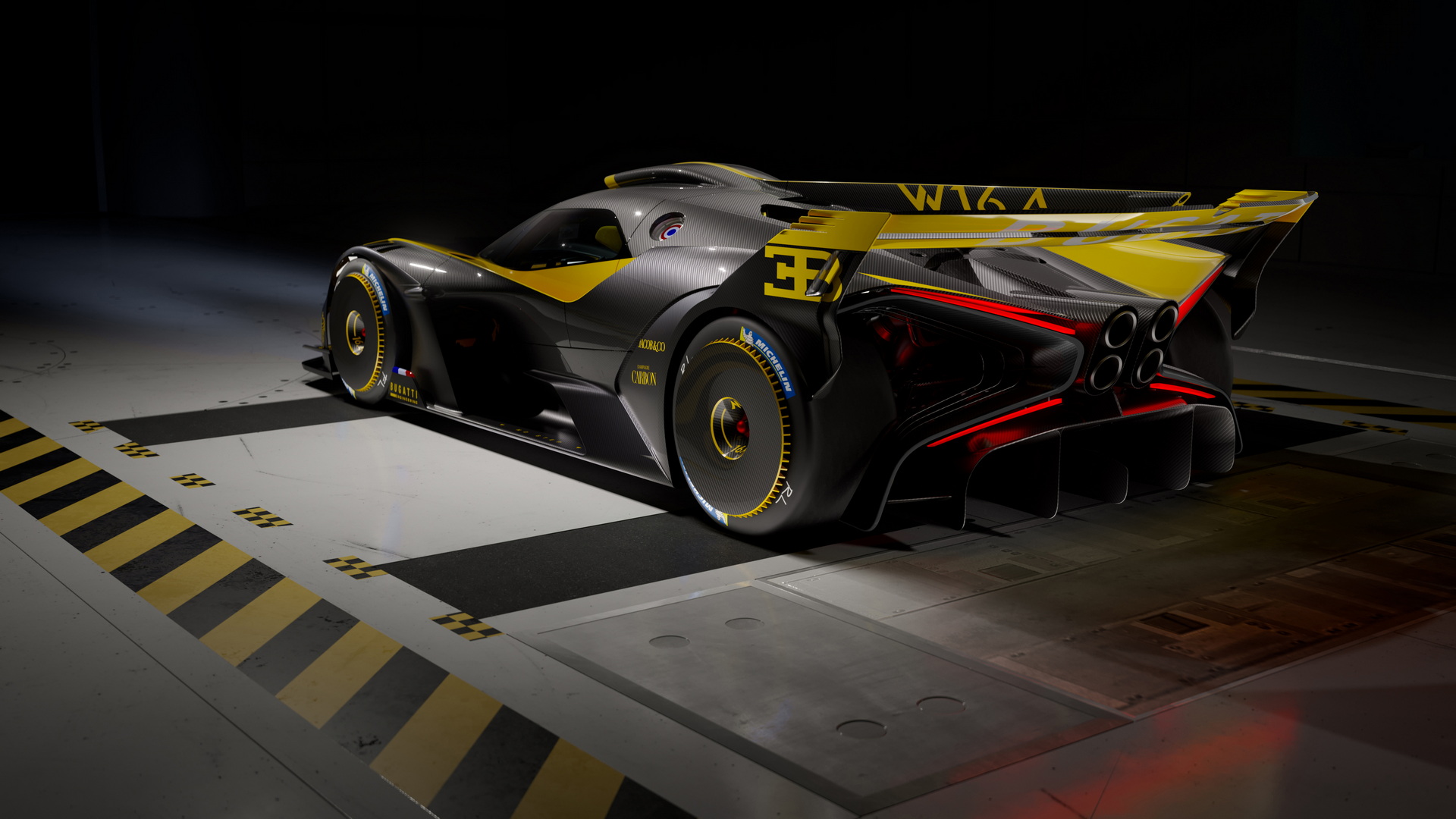Bugatti published two photos on social media showing the production version of the Bolide taken during development testing. The images focus on the headlight and the wheel of the track-only hypercar which will be the most extreme Chiron-based offering ever made.
The Bugatti Bolide was originally introduced as a one-off concept in October 2020, but the enthusiastic response led to the announcement of a limited production run of 40 units in August 2021. While we have already seen hypercar from all different angles in official galleries and videos, the production version is expected to feature small changes in the design. This is probably why the latest posts have the form of a teaser.
Read: Jaw-Dropping Images Of The Bugatti W16 Mistral Will Take You To Hypercar Heaven
The snapshots from the “intense development program” reveal that the signature fender-mounted X-shaped LED headlights have been retained, although the bumper and bonnet intakes appear to have been refined for production. The same applies to the vents on the front fenders. Finally, the center-lock alloy wheels with the racing Michelin tires do not have the aero covers of the concept, although these could be added later on.
Like all other limited-production specials by Bugatti, the Bolide is based on the Chiron chassis and uses the quad-turbo 8.0-liter W16 engine. However, the track-only nature of the hypercar allows engineers and designers to surpass any limitation, creating the quickest and most extreme Bugatti in history.
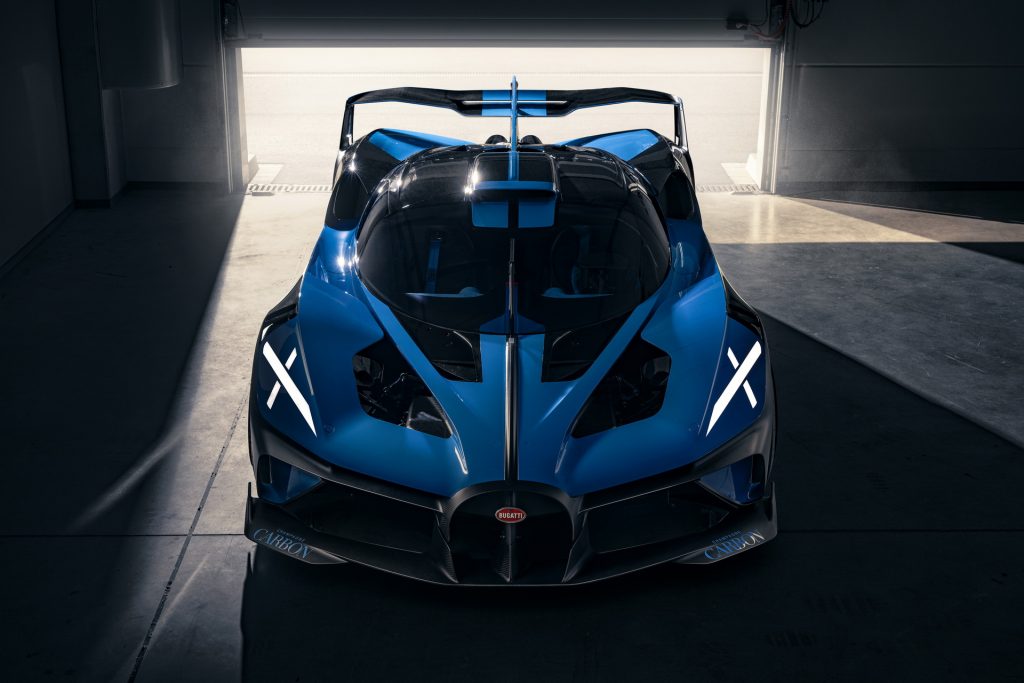
The production version of the Bolide will produce 1,578 hp (1,176 kW / 1,600 PS) and weigh 1,450 kg (3,196 lbs), figures that have been toned down compared to the concept’s 1,824 hp (1,360 kW / 1,850 PS) and 1,240 kg (2,733 lbs) respectively. Still, it is expected to be mind-blowing fast thanks to the aggressive setup of the chassis and electronics, alongside the improved aerodynamics compared to Bugatti’s roadgoing hypercars.
While Bugatti hasn’t given us a date for the debut of the production-ready Bolide, the first deliveries are expected in 2024. As for the price, each of the 40 units costs a respectable €4 million ($4.4 million).




